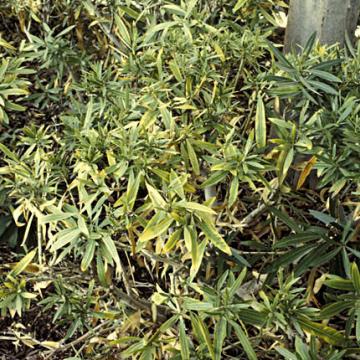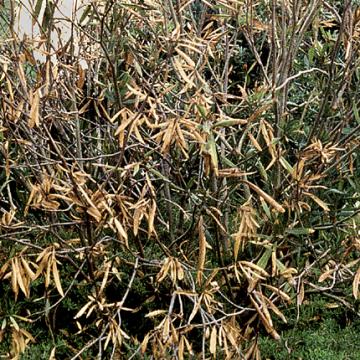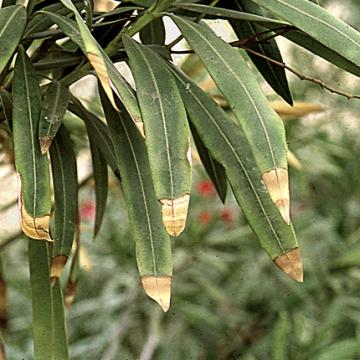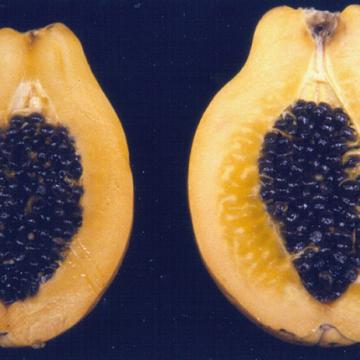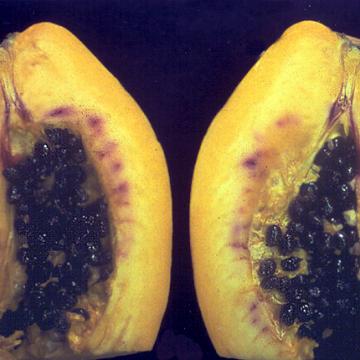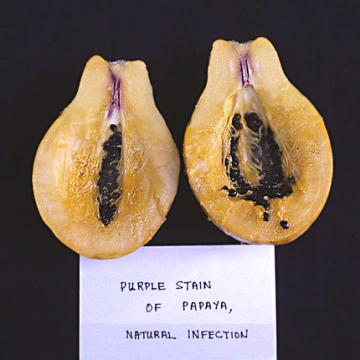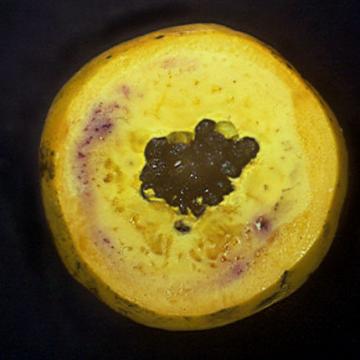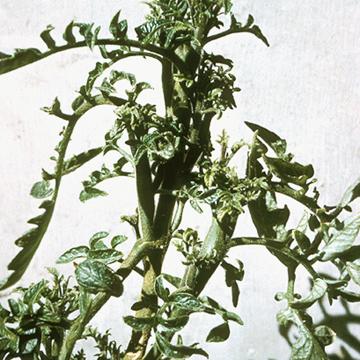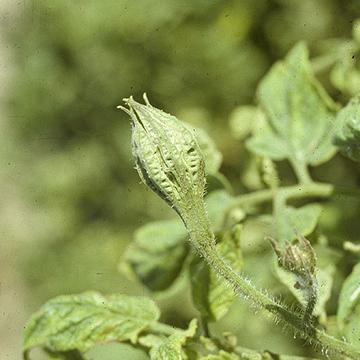DISEASE: Oleander leaf scorch
HOST: Oleander
Diseased plant with scalloped, yellowish leaves. This usually is followed by dieback of twigs and branches. Plants often die 2 years after infection.
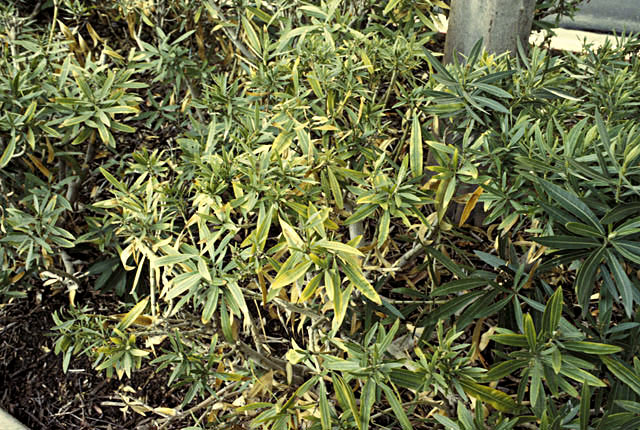
Oleander leaf scorch | Oleander
DISEASE: Oleander leaf scorch
HOST: Oleander (Nerium oleander)
PATHOGEN: Xylella fastidiosa
SOURCE: S. Purcell
DISEASE: Oleander leaf scorch
HOST: Oleander
Oleander with symptoms of severe scorch.
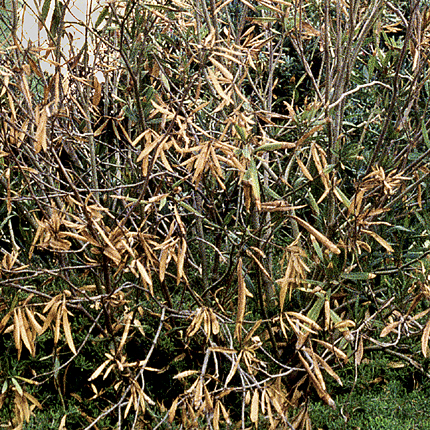
Oleander leaf scorch | Oleander
DISEASE: Oleander leaf scorch
HOST: Oleander (Nerium oleander)
PATHOGEN: Xylella fastidiosa
SOURCE: M. Blua
DISEASE: Oleander leaf scorch
HOST: Oleander
Oleander with scorch symptoms primarily at leaf tips, an early stage of disease.
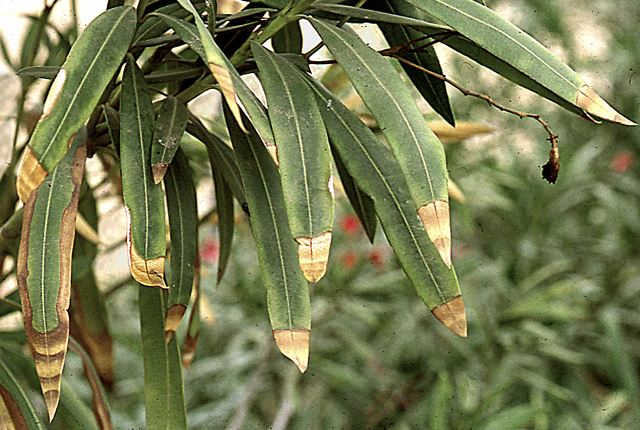
Oleander leaf scorch | Oleander
DISEASE: Oleander leaf scorch
HOST: Oleander (Nerium oleander)
PATHOGEN: Xylella fastidiosa
SOURCE: M. Blua
DISEASE: Purple stain
HOST: Papaya
Purple pigmentation of internal tissues near peduncle end of fruits. Pigmentation and yellow translucence of papaya flesh are more evident of fruit on right.
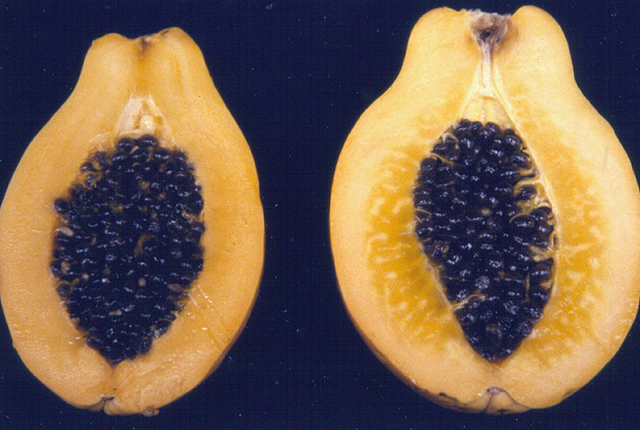
Purple stain | Papaya
DISEASE: Purple stain
HOST: Papaya (Carica papaya)
PATHOGEN: Pantoea agglomerans
PATHOGEN SYNONYM: Erwinia herbicola
SOURCE: M. Nelson
DISEASE: Purple stain
HOST: Papaya
Purple pigmentation of internal tissues.
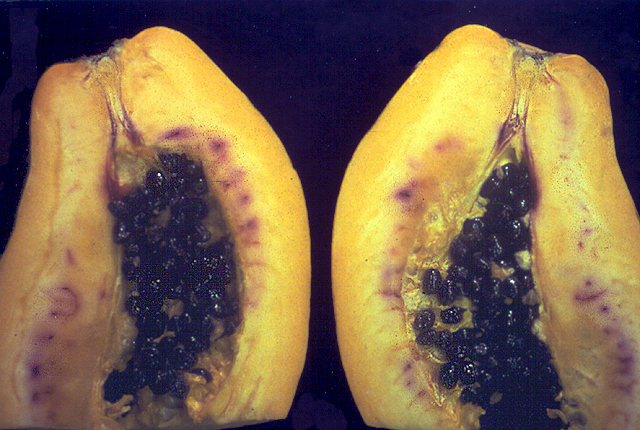
Purple stain | Papaya
DISEASE: Purple stain
HOST: Papaya (Carica papaya)
PATHOGEN: Pantoea agglomerans
PATHOGEN SYNONYM: Erwinia herbicola
SOURCE: M. Nelson
DISEASE: Purple stain
HOST: Papaya
Another view of purple discoloration at peduncle end. Bacteria are found in vascular tissues and latex ducts.
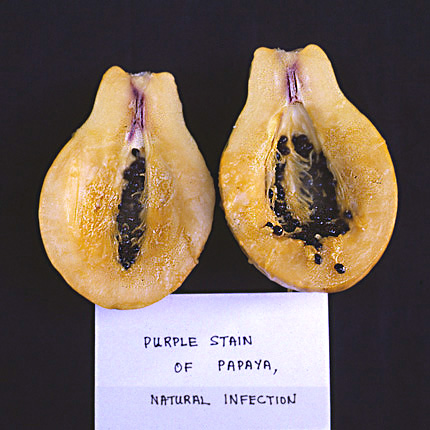
Purple stain | Papaya
DISEASE: Purple stain
HOST: Papaya (Carica papaya)
PATHOGEN: Pantoea agglomerans
PATHOGEN SYNONYM: Erwinia herbicola
SOURCE: K. Nishijima
DISEASE: Purple stain
HOST: Papaya
Cross section of fruit exhibiting purplish discoloration in latex ducts.
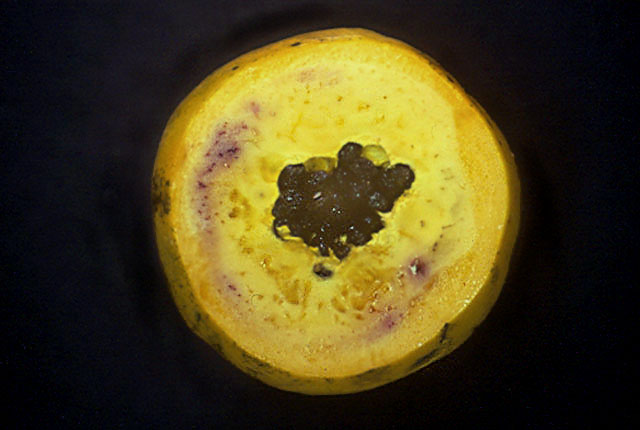
Purple stain | Papaya
DISEASE: Purple stain
HOST: Papaya (Carica papaya)
PATHOGEN: Pantoea agglomerans
PATHOGEN SYNONYM: Erwinia herbicola
SOURCE: M. Nelson, A. Alvarez
DISEASE: Tomato big bud
HOST: Tomato
Characteristic symptoms are swollen, apical stems and stunted leaves. Apical stems are generally thickened and assume a stiff and erect growth habit. Internodes are shortened and flower buds are greatly enlarged.
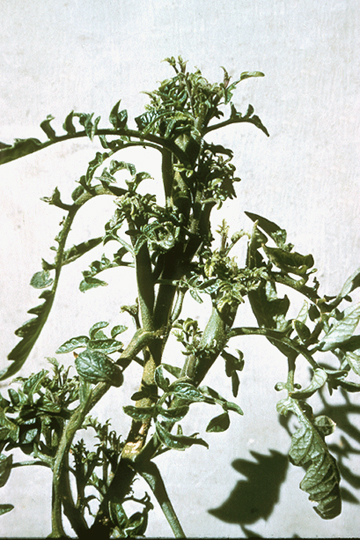
Tomato big bud | Tomato
DISEASE: Tomato big bud
HOST: Tomato (Lycopersicon esculentum)
PATHOGEN: 'Candidatus Phytoplasma asteris'
PATHOGEN SYNONYM: Phytoplasma Aster yellows group
SOURCE: D. Teakle
DISEASE: Tomato big bud
HOST: Tomato
Symptoms are enlarge sepals that do not separate. Flower buds stay green and do not develop into fruit. Leaves are small and chlorotic.
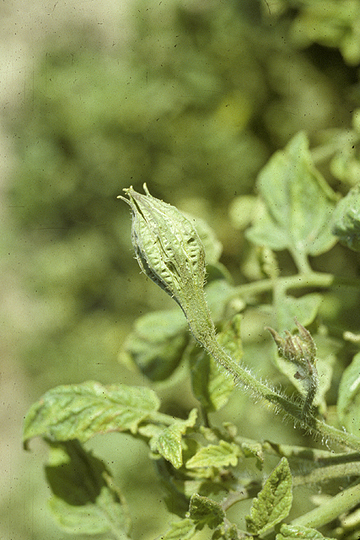
Tomato big bud | Tomato
DISEASE: Tomato big bud
HOST: Tomato (Lycopersicon esculentum)
PATHOGEN: 'Candidatus Phytoplasma asteris'
PATHOGEN SYNONYM: Phytoplasma Aster yellows group
SOURCE: S. Thomson


